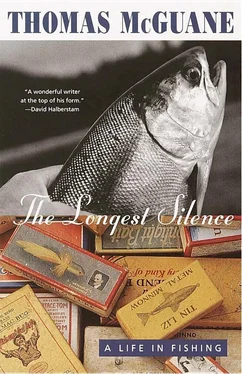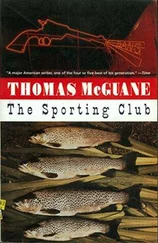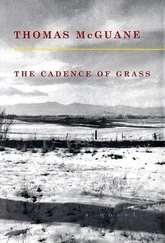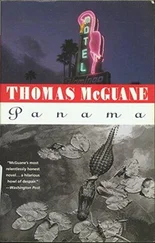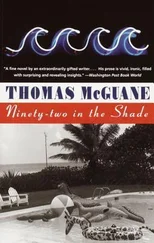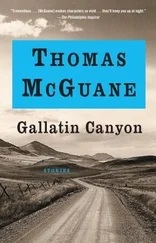So, having fished my way through the enchantments of perfectly clear Icelandic sea-bound water and the myriad puzzles of its movement among submerged boulders and right down to the tailout without so much as a pull, I retreated to the shore and took the spit of raised bottom out to the last position in the lower pool. Against the pale yellow of the slabrock in the tail, I could see two small salmon holding. They were at the end of a long cast, and to get a good mend it was necessary to make the cast and then immediately strip the slack for the mend. I covered these fish for a good while, several changes of fly, and failed to interest them. I reeled up and tried to decide if I should fish the run through again or go downstream. Leaving such good-looking water is never easy. As I looked at the two uncooperative grilse in the tailout, I noticed a dark shape slightly below them. I tried to recall if the bottom was discolored there but the shape moved up beside the grilse, which it dwarfed. This was a terrific salmon.
I went right back to what I had been doing on behalf of the smaller fish and had as much success. I was really feeling driven about this, not having seen a fish anything like this one all trip long. There was no shift of movement, no ardent elevation, much less a boil, when my fly crossed the fish’s window. I did note that the grilse were getting agitated, either to move up into deeper water or to simply depart this atmosphere of disturbance I’d created. Perhaps the big fish would go with them, too.
I decided to change the game entirely, before I wore out my welcome. I put on a 120-grain sink tip and tied a small, black Madeleine to the end of my leader. I made the same presentation, except that the whole ensemble was a couple of feet down, slap in front of the fish. He moved slightly. I had to assume something had happened, so I lifted the rod and concluded I was either into the fish or the bottom. My line bellied out downstream briefly, then tightened as the leader sheared upstream.
The salmon took a hard left onto the shallows where he made a fearful uproar. I told myself that I would never land this fish and I was right. Ploughing around in the rocks, flinging water everywhere, he liberated himself as decisively as he had taken my silly little fly.
But I was so jubilant because for a moment at least we had agreed about something! It was like a brief truce in a marriage, following which one partner says, “I’m out of here.”
I felt oddly content as I sat at the bottom of the canyon, and willing to wait to fish again until I absorbed it all, the idea of the streamlined shapes coming in from the sea, by the moon, by the tide, by whatever mystery, up through the sheep pastures, bent on some eternal genetic strategy. They know what they’re doing.
FOR MANY WHO REGARD angling as the symptom of a way of living rather than a series of mechanical procedures, the writing of Roderick Haig-Brown serves as scripture. He is a genuinely famous fisherman in an era when famous fishermen scramble to name flies and knots after themselves with a self-aggrandizing ardor unknown since the Borgia popes. Anyone who has sat in on the bad-mouth sessions at fly shops and guides’ docks will welcome the serene observations of a man more interested in fish than fishing, and in the whole kingdom of nature rather than holding water and hot spots.
There is scarcely an angler so avid that he doesn’t spend most of his time not angling; much of the time, because of the inclemency of weather or the demands of work or the inferiority of actuality to fantasy, he pursues his sport in what is called “the armchair.” There are any number of armchair anglers who do not own armchairs and often are harmless creatures whose minds have beaten out everything else for the control of things, and for them the theory of the sport lies heavily upon the sport itself.
Others use the armchair, actual or not, selectively, to read and to think, and at such times they’re susceptible to the guidance of men who have written about this peerless sport which affects the world’s fortunes not at all. For them there is no better place to turn than to the work of Roderick Haig-Brown.
That much has been clear for some time: Haig-Brown’s prominence in this fugitive literature is seldom doubted. His series Fisherman’s Spring, Summer, Fall , and Winter is an integral part of the bookshelf of every angler who thinks about what he is doing. Measure of the Year, Return to the River , and The Western Angler amplify that great series and lead to increasingly broad preoccupations within his sport, until the reader shares with Haig-Brown a continuity of perceptions from the tying of small brilliant flies to the immeasurable and celestial movements of fish in migration. Finally, he accounts for the ways the angler holds his fishing grounds in trust, because I suppose before anything else Haig-Brown is a conservationist.
He lived in Campbell River, British Columbia, and one summer I decided to pay him a visit, not, I hasten to admit, without some trepidation. Sportsman, magistrate, prose stylist of weight, Haig-Brown seems artfully contrived to make me feel in need of a haircut and refurbished credentials. I wanted to withdraw my novels from publication and extirpate the bad words, reduce the number of compliant ladies by as much as 96 percent.
As I winged my way north, the Rockies, in my present mood, unrolled themselves beneath me like skin trouble. A drunk boarded the plane in Spokane and was assigned the seat next to mine. He wore a shiny FBI drip-dry summer suit and a pair of armadillo cowboy boots. He told me he couldn’t fly sober and that since he was doing emergency heart surgery in Seattle that afternoon, he certainly didn’t have time to drive.
“At three o’clock,” he explained, “I’m going to thwack open a guy’s heart and I’m already half in the bag. I may have to farm this mother out. I’m totaled.” He leaned over to look out the window. “Aw, hell,” he said, “I’ll end up doing it. It’s my dedication. Think about this: when the hero of Kafka’s Metamorphosis wakes up and discovers that he’s been transformed into a giant beetle, the first thing he does is call the office and tell his boss he’s going to be delayed. Where are you headed?”
I explained about my trip. As a reply, I suppose, my seatmate told me he’d seen matadors in the Plaza de Toros fighting a giant Coca-Cola bottle as it blew around the arena in the wind; ultimately it was drawn from the ring behind two horses and to resonant olés, just like a recently dispatched bull. “Tell that to your buddy Haig-Brown. He’s a writer. He’ll like that story.”
At this point, my companion confessed that he wasn’t a doctor. He was an inventor. He’d come up with an aluminum ring that you put over the exhaust pipe of your automobile; stretched across the ring was a piece of cheesecloth. An antipollution device, it was already patented in twelve states. “If you kick in twenty thousand,” he said, “I can let you have half the action when we go public.”
“Well, I don’t know—”
“I’ve got a friend who sold ten million smackers’ worth of phony stock and got a slap on the wrist from the Securities Commission. This is free enterprise, pal. Shit or get off the pot.”
“I just don’t see how I—”
“How about your friend Haig-Brown? Maybe he can buy in. Maybe he can stake you and the two of you can split the action. What say?”
In Vancouver, I spent a long layover waiting for the small plane to Campbell River. There were a number of people whose small luggage suggested a weekend trip to Vancouver, an enormously muscular girl in hot pants, and a number of loggers. At one point I looked up from the book I was reading to see a familiar face. It was Roderick Haig-Brown, lost in conversation with the ordinary people around me, many of whom seemed to know him.
Читать дальше
